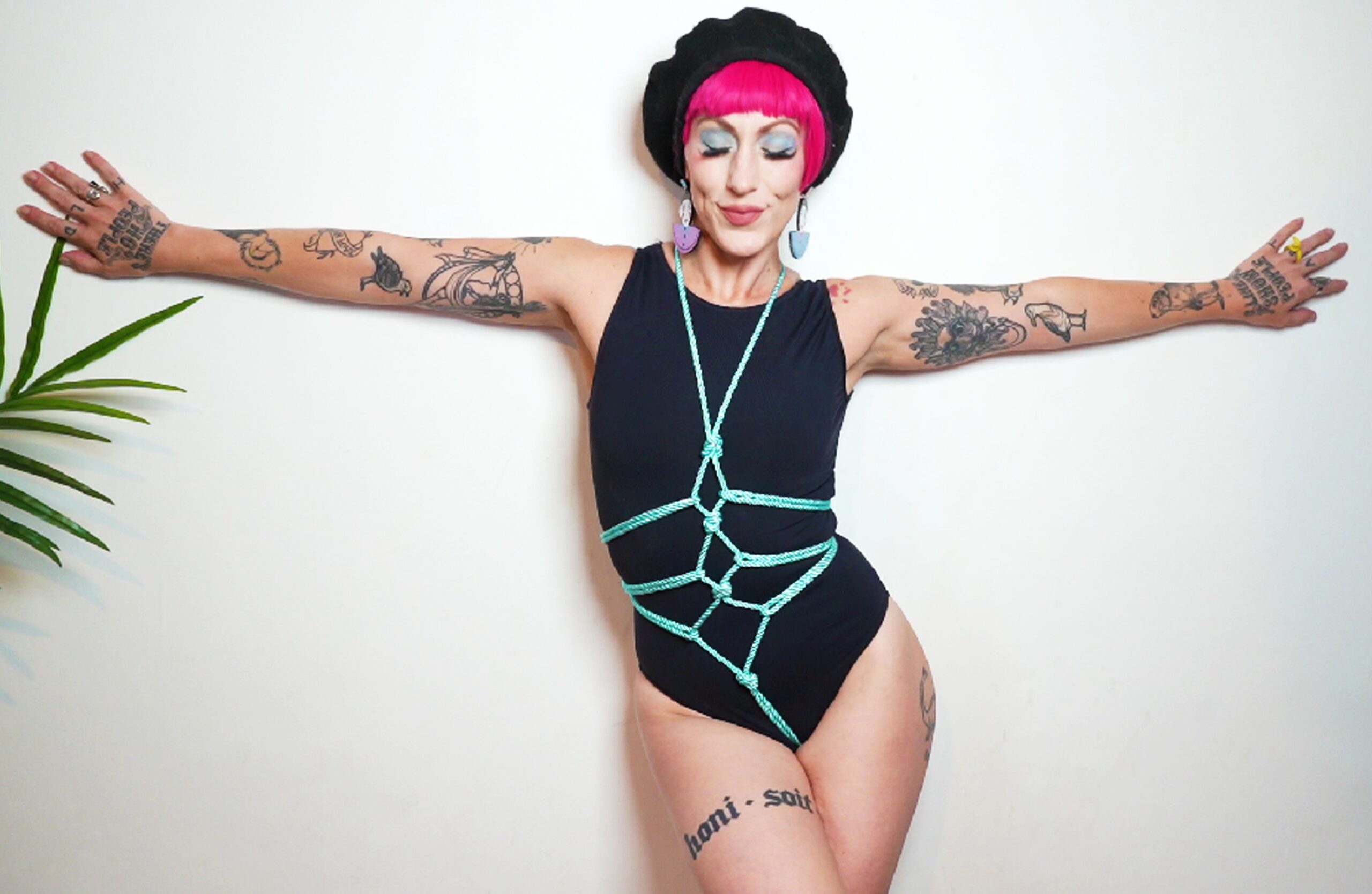Understanding Gender Identity
Understanding gender identity is crucial in today’s increasingly diverse world. Gender identity refers to an individual’s internal sense of their own gender, which may or may not align with the sex they were assigned at birth. For many people, gender is a binary concept—either male or female. However, for others, gender exists on a spectrum, encompassing a wide range of identities beyond these traditional categories.
Defining Gender
Genderqueer is an umbrella term used by individuals who identify as neither exclusively male nor female. It encompasses a diverse range of gender identities and expressions that fall outside the traditional binary of man and woman. People who identify as genderqueer may experience their gender as fluid, shifting, or existing on a spectrum.
Some genderqueer individuals might prefer to use pronouns like they/them instead of he/him or she/her. Others may identify with specific nonbinary identities such as agender (without gender), bigender (identifying with two genders), or demigender (partly identifying with one gender and partly not). It’s important to remember that gender identity is deeply personal and unique to each individual.
Respecting an individual’s chosen gender identity and pronouns is crucial for creating an inclusive and affirming environment.
The Spectrum of Gender
Understanding gender identity is crucial in today’s increasingly diverse world. Gender identity refers to an individual’s internal sense of their own gender, which may or may not align with the sex they were assigned at birth. For many people, gender is a binary concept—either male or female. However, for others, gender exists on a spectrum, encompassing a wide range of identities beyond these traditional categories.

Genderqueer is an umbrella term used by individuals who identify as neither exclusively male nor female. It encompasses a diverse range of gender identities and expressions that fall outside the traditional binary of man and woman. People who identify as genderqueer may experience their gender as fluid, shifting, or existing on a spectrum.
Some genderqueer individuals might prefer to use pronouns like they/them instead of he/him or she/her. Others may identify with specific nonbinary identities such as agender (without gender), bigender (identifying with two genders), or demigender (partly identifying with one gender and partly not). It’s important to remember that gender identity is deeply personal and unique to each individual.
Respecting an individual’s chosen gender identity and pronouns is crucial for creating an inclusive and affirming environment.
Gender Identity vs. Sex Assigned at Birth
Understanding gender identity is crucial in today’s increasingly diverse world. Gender identity refers to an individual’s internal sense of their own gender, which may or may not align with the sex they were assigned at birth. For many people, gender is a binary concept—either male or female. However, for others, gender exists on a spectrum, encompassing a wide range of identities beyond these traditional categories.
Genderqueer is an umbrella term used by individuals who identify as neither exclusively male nor female. It encompasses a diverse range of gender identities and expressions that fall outside the traditional binary of man and woman. People who identify as genderqueer may experience their gender as fluid, shifting, or existing on a spectrum.
Some genderqueer individuals might prefer to use pronouns like they/them instead of he/him or she/her. Others may identify with specific nonbinary identities such as agender (without gender), bigender (identifying with two genders), or demigender (partly identifying with one gender and partly not). It’s important to remember that gender identity is deeply personal and unique to each individual.
Respecting an individual’s chosen gender identity and pronouns is crucial for creating an inclusive and affirming environment.
Exploring the Term “Genderqueer”
In today’s world, understanding diverse identities has become increasingly important. Genderqueer is a term that describes individuals who identify outside of the traditional binary categories of male and female. This umbrella term encompasses a wide spectrum of gender identities and expressions that challenge conventional notions of gender.
Origins and Meaning
The term “genderqueer” emerged in the late 20th century as a way to describe individuals whose gender identity doesn’t fit neatly into the categories of male or female. It encompasses a broad spectrum of experiences, and its meaning can vary from person to person.
-
Some people who identify as genderqueer may experience their gender as fluid, fluctuating between different identities or expressing it in non-traditional ways.
-
Others may identify with a specific nonbinary gender identity, such as agender (having no gender), bigender (identifying with two genders), or demigender (partially identifying with one gender and partially not).
-
It’s essential to remember that gender is personal and unique to each individual, and there’s no single “right” way to understand or express it.
Variations in Usage and Interpretation
In today’s world, understanding diverse identities has become increasingly important. Genderqueer is a term that describes individuals who identify outside of the traditional binary categories of male and female. This umbrella term encompasses a wide spectrum of gender identities and expressions that challenge conventional notions of gender.
The term “genderqueer” emerged in the late 20th century as a way to describe individuals whose gender identity doesn’t fit neatly into the categories of male or female. It encompasses a broad spectrum of experiences, and its meaning can vary from person to person.
-
Some people who identify as genderqueer may experience their gender as fluid, fluctuating between different identities or expressing it in non-traditional ways.
-
Others may identify with a specific nonbinary gender identity, such as agender (having no gender), bigender (identifying with two genders), or demigender (partially identifying with one gender and partially not).
-
It’s essential to remember that gender is personal and unique to each individual, and there’s no single “right” way to understand or express it.
Umbrella Term vs. Specific Identity
Genderqueer is an umbrella term encompassing a variety of gender identities that fall outside the traditional categories of male and female. It’s important to remember that this term is used by individuals who identify with it, and its meaning can vary from person to person. Some people who use the term genderqueer may experience their gender as fluid or shifting, while others may identify with a specific nonbinary gender identity.
Respecting an individual’s chosen pronouns and gender identity is crucial for creating an inclusive and affirming environment.
Experiences of Genderqueer People
Genderqueer is an umbrella term encompassing a variety of gender identities that fall outside the traditional categories of male and female. It’s important to remember that this term is used by individuals who identify with it, and its meaning can vary from person to person. Some people who use the term genderqueer may experience their gender as fluid or shifting, while others may identify with a specific nonbinary gender identity.
Diverse Expressions
Genderqueer is an umbrella term encompassing a variety of gender identities that fall outside the traditional categories of male and female. It’s important to remember that this term is used by individuals who identify with it, and its meaning can vary from person to person. Some people who use the term genderqueer may experience their gender as fluid or shifting, while others may identify with a specific nonbinary gender identity.
Respecting an individual’s chosen pronouns and gender identity is crucial for creating an inclusive and affirming environment.
Navigating Societal Norms
Genderqueer individuals navigate societal norms in diverse ways. Some might choose to express their gender through clothing, hairstyles, or mannerisms that defy traditional expectations. Others may advocate for greater understanding and acceptance of nonbinary identities through activism or community building.
The experience of being genderqueer can vary greatly depending on individual circumstances, cultural contexts, and personal expression. Some individuals face challenges related to societal stigma, discrimination, or a lack of understanding from family and friends. Others find support and belonging within LGBTQ+ communities or online spaces dedicated to nonbinary identities.
Navigating these complexities often involves self-discovery, resilience, and a commitment to advocating for inclusivity.
Challenges and Stigma
Genderqueer individuals experience a wide range of emotions, thoughts, and challenges. Many face societal stigma and discrimination, encountering prejudice from individuals who do not understand or accept gender identities beyond the traditional binary. This can lead to feelings of isolation, stress, and mental health struggles.

Accessing affirming healthcare, including mental health services and gender-affirming medical care, can be a significant challenge for genderqueer individuals, particularly in areas with limited resources or providers who are knowledgeable about nonbinary identities.
Furthermore, legal barriers can create additional hurdles, such as difficulties obtaining accurate identification documents that reflect their gender identity.
Family and societal pressure to conform to traditional gender roles can also be a source of conflict for genderqueer individuals. Some may face rejection or lack of support from family members who struggle to understand or accept their child’s gender identity.
Genderqueer Representation and Advocacy
Genderqueer representation and advocacy are crucial in creating a society that embraces diversity and inclusivity. Visibility of genderqueer experiences through media, art, literature, and public discourse helps challenge societal norms and fosters understanding of nonbinary identities. Advocacy efforts work to ensure equal rights and opportunities for genderqueer individuals, addressing issues such as healthcare access, legal recognition, and protection from discrimination. By amplifying genderqueer voices and promoting acceptance, we can create a more equitable world that celebrates the spectrum of human gender identities.
Visibility in Media and Culture
Genderqueer representation and advocacy are crucial in creating a society that embraces diversity and inclusivity. Visibility of genderqueer experiences through media, art, literature, and public discourse helps challenge societal norms and fosters understanding of nonbinary identities. Advocacy efforts work to ensure equal rights and opportunities for genderqueer individuals, addressing issues such as healthcare access, legal recognition, and protection from discrimination. By amplifying genderqueer voices and promoting acceptance, we can create a more equitable world that celebrates the spectrum of human gender identities.

-
Increased visibility in media: The portrayal of genderqueer characters in film, television, books, and other forms of media can help normalize nonbinary identities and educate the public about their experiences.
-
Supporting LGBTQ+ organizations: Donating to or volunteering with organizations that support LGBTQ+ individuals, including those specifically focused on genderqueer issues, can provide valuable resources and advocacy.
-
Educating oneself and others: Taking the time to learn about genderqueer identities, terminology, and challenges helps break down stereotypes and fosters empathy. Sharing this knowledge with friends, family, and colleagues can contribute to a more inclusive environment.
Promoting Acceptance and Understanding
Genderqueer is an umbrella term encompassing a variety of gender identities that fall outside the traditional categories of male and female. It’s important to remember that this term is used by individuals who identify with it, and its meaning can vary from person to person. Some people who use the term genderqueer may experience their gender as fluid or shifting, while others may identify with a specific nonbinary gender identity.
Genderqueer representation and advocacy are crucial in creating a society that embraces diversity and inclusivity. Visibility of genderqueer experiences through media, art, literature, and public discourse helps challenge societal norms and fosters understanding of nonbinary identities. Advocacy efforts work to ensure equal rights and opportunities for genderqueer individuals, addressing issues such as healthcare access, legal recognition, and protection from discrimination. By amplifying genderqueer voices and promoting acceptance, we can create a more equitable world that celebrates the spectrum of human gender identities.
-
Increased visibility in media: The portrayal of genderqueer characters in film, television, books, and other forms of media can help normalize nonbinary identities and educate the public about their experiences.
-
Supporting LGBTQ+ organizations: Donating to or volunteering with organizations that support LGBTQ+ individuals, including those specifically focused on genderqueer issues, can provide valuable resources and advocacy.
-
Educating oneself and others: Taking the time to learn about genderqueer identities, terminology, and challenges helps break down stereotypes and fosters empathy. Sharing this knowledge with friends, family, and colleagues can contribute to a more inclusive environment.
Working Towards Equality and Inclusion
Understanding gender identity is crucial for building a society that embraces diversity and inclusion. Genderqueer individuals identify as neither exclusively male nor female, encompassing a spectrum of identities beyond the traditional binary.
Respecting an individual’s chosen pronouns and gender identity is paramount. When interacting with someone who identifies as genderqueer, it’s essential to use the pronouns they specify (e.g., they/them) and address them in a way that aligns with their self-identified gender.
Genderqueer representation in media, literature, and public discourse helps normalize nonbinary identities and challenge societal norms. Amplifying genderqueer voices through storytelling and creating inclusive spaces are vital steps towards fostering understanding and acceptance.
Advocacy efforts play a crucial role in ensuring equal rights and opportunities for genderqueer individuals. This includes working to protect them from discrimination, improve access to healthcare and legal recognition that aligns with their gender identity, and promote policies that support their well-being and inclusion.
Purchase Affordable Vibrators for Every Budget
Buy Realistic Vibrators for Realistic Quiet Operation
Shop Vibrators in Fun and Contemporary Designs
Buy Compact Bullet Vibrators for Every Occasion
Purchase Portable Remote-Controlled Vibrators for Travel
Discover Luxury Vibrators with Superior Build and Design
Order the Most Popular Wireless Vibrators Today
Get Premium Waterproof Vibrators Delivered Fast
Electric Youth Mag
Fortie Label
- How Tinkerbell Nose Tip Lift Enhances Facial Aesthetics - May 23, 2025
- New Patient Treatment Near Camberley, Surrey - May 23, 2025
- What Are The Best CBD Gummy Edibles For Relaxation - May 23, 2025
